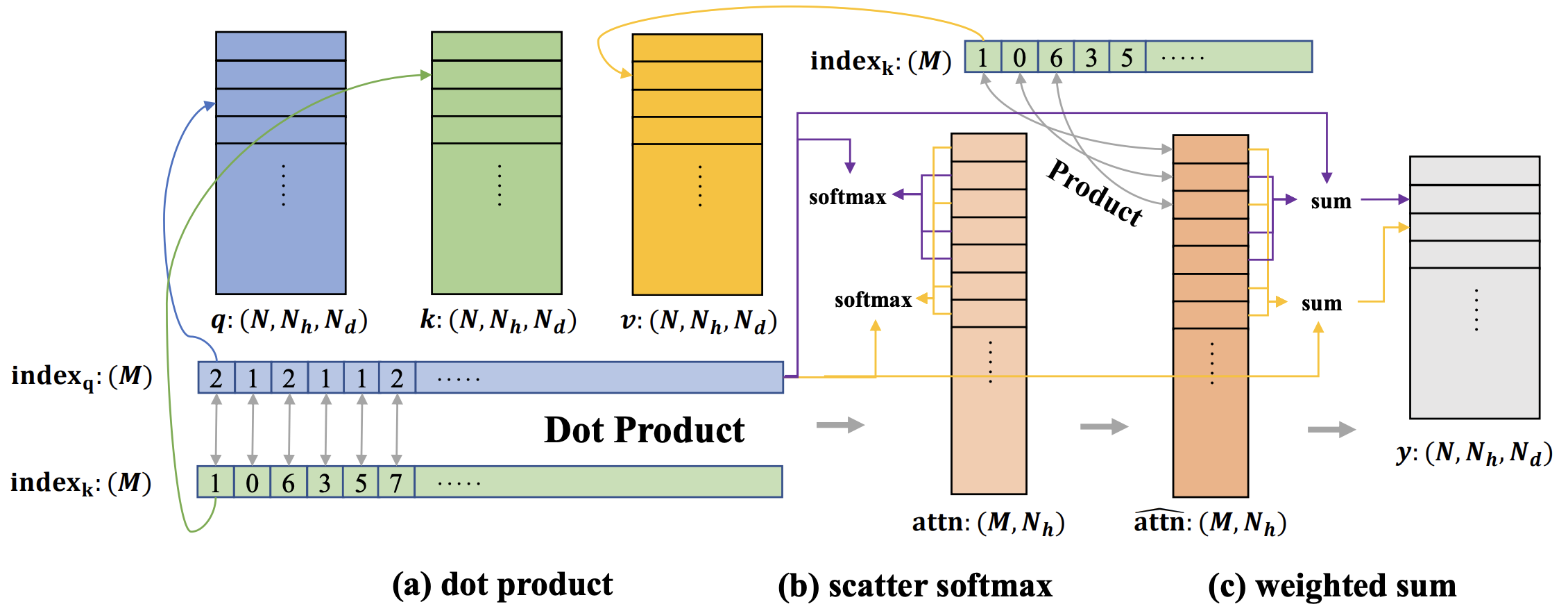SparseTransformer (SpTr) provides a fast, memory-efficient, and easy-to-use implementation for sparse transformer with varying token numbers (e.g., window transformer for 3D point cloud).
SpTr has been used by the following works:
-
Spherical Transformer for LiDAR-based 3D Recognition (CVPR 2023): [Paper] [Code]
-
Stratified Transformer for 3D Point Cloud Segmentation (CVPR 2022): [Paper] [Code]
pip install torch==1.8.0+cu111 torchvision==0.9.0+cu111 torchaudio==0.8.0 -f https://download.pytorch.org/whl/torch_stable.html
pip install torch_scatter==2.0.9
pip install torch_geometric==1.7.2
python3 setup.py install
SpTr can be easily used in most current transformer-based 3D point cloud networks, with only several minor modifications. First, define the attention module sptr.VarLengthMultiheadSA. Then, wrap the input features and indices into sptr.SparseTrTensor, and forward it into the module. That's all. A simple example is as follows. For more complex usage, you can refer to the code of above works (e.g., SphereFormer, StratifiedFormer).
import sptr
# Define module
dim = 48
num_heads = 3
indice_key = 'sptr_0'
window_size = np.array([0.4, 0.4, 0.4]) # can also be integers for voxel-based methods
shift_win = False # whether to adopt shifted window
self.attn = sptr.VarLengthMultiheadSA(
dim,
num_heads,
indice_key,
window_size,
shift_win
)
# Wrap the input features and indices into SparseTrTensor. Note: indices can be either intergers for voxel-based methods or floats (i.e., xyz) for point-based methods
# feats: [N, C], indices: [N, 4] with batch indices in the 0-th column
input_tensor = sptr.SparseTrTensor(feats, indices, spatial_shape=None, batch_size=None)
output_tensor = self.attn(input_tensor)
# Extract features from output tensor
output_feats = output_tensor.query_feats
Xin Lai (a Ph.D student at CSE CUHK, xinlai@cse.cuhk.edu.hk) - Initial CUDA implementation, maintainance.
Fanbin Lu (a Ph.D student at CSE CUHK) - Improve CUDA implementation, maintainance.
Yukang Chen (a Ph.D student at CSE CUHK) - Maintainance.
If you find this project useful, please consider citing
@inproceedings{lai2023spherical,
title={Spherical Transformer for LiDAR-based 3D Recognition},
author={Lai, Xin and Chen, Yukang and Lu, Fanbin and Liu, Jianhui and Jia, Jiaya},
booktitle={Proceedings of the IEEE/CVF Conference on Computer Vision and Pattern Recognition},
year={2023}
}
@inproceedings{lai2022stratified,
title={Stratified transformer for 3d point cloud segmentation},
author={Lai, Xin and Liu, Jianhui and Jiang, Li and Wang, Liwei and Zhao, Hengshuang and Liu, Shu and Qi, Xiaojuan and Jia, Jiaya},
booktitle={Proceedings of the IEEE/CVF Conference on Computer Vision and Pattern Recognition},
pages={8500--8509},
year={2022}
}
This project is licensed under the Apache license 2.0 License.
